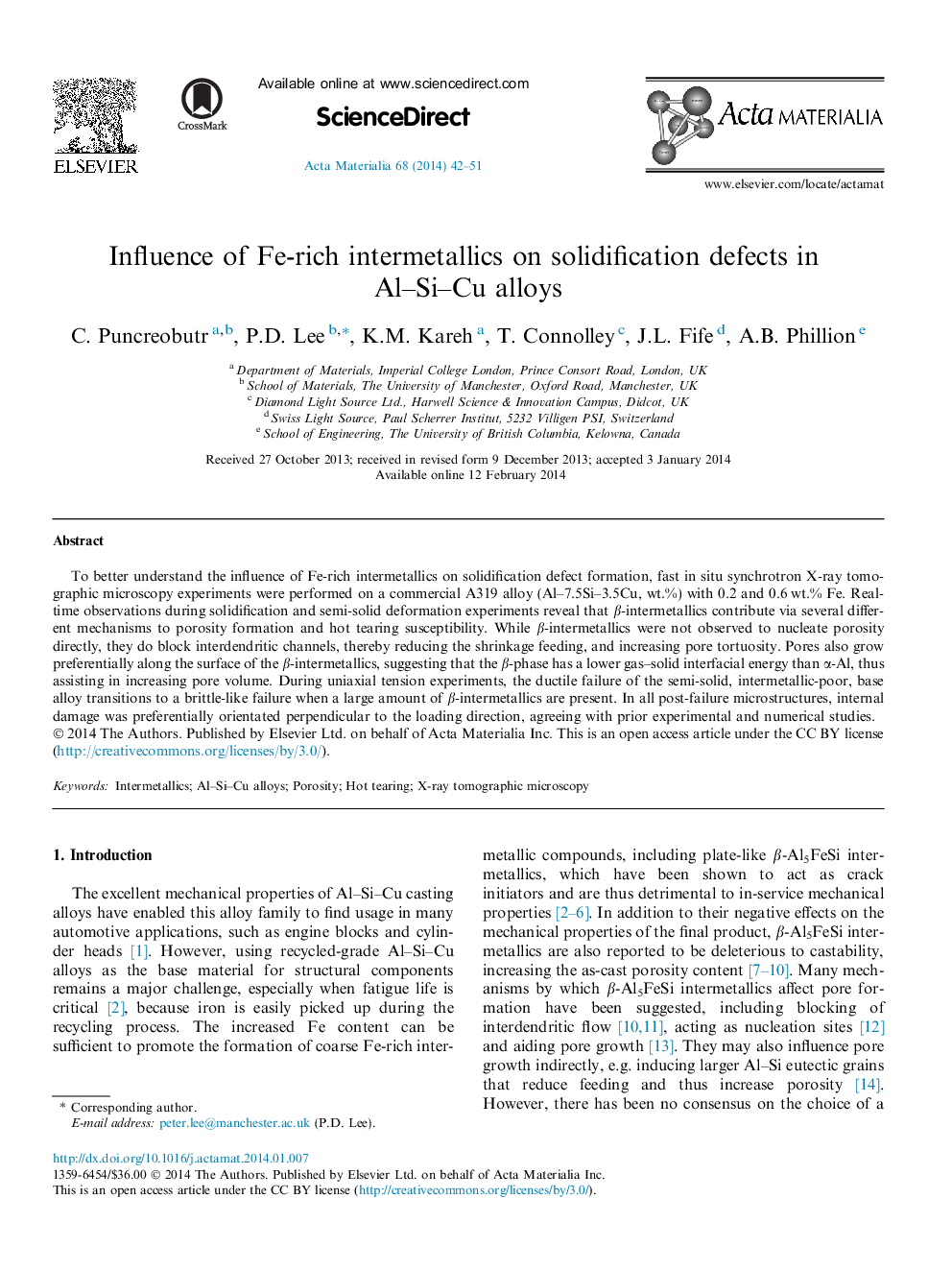| Article ID | Journal | Published Year | Pages | File Type |
|---|---|---|---|---|
| 7882326 | Acta Materialia | 2014 | 10 Pages |
Abstract
To better understand the influence of Fe-rich intermetallics on solidification defect formation, fast in situ synchrotron X-ray tomographic microscopy experiments were performed on a commercial A319 alloy (Al-7.5Si-3.5Cu, wt.%) with 0.2 and 0.6 wt.% Fe. Real-time observations during solidification and semi-solid deformation experiments reveal that β-intermetallics contribute via several different mechanisms to porosity formation and hot tearing susceptibility. While β-intermetallics were not observed to nucleate porosity directly, they do block interdendritic channels, thereby reducing the shrinkage feeding, and increasing pore tortuosity. Pores also grow preferentially along the surface of the β-intermetallics, suggesting that the β-phase has a lower gas-solid interfacial energy than α-Al, thus assisting in increasing pore volume. During uniaxial tension experiments, the ductile failure of the semi-solid, intermetallic-poor, base alloy transitions to a brittle-like failure when a large amount of β-intermetallics are present. In all post-failure microstructures, internal damage was preferentially orientated perpendicular to the loading direction, agreeing with prior experimental and numerical studies.
Related Topics
Physical Sciences and Engineering
Materials Science
Ceramics and Composites
Authors
C. Puncreobutr, P.D. Lee, K.M. Kareh, T. Connolley, J.L. Fife, A.B. Phillion,
